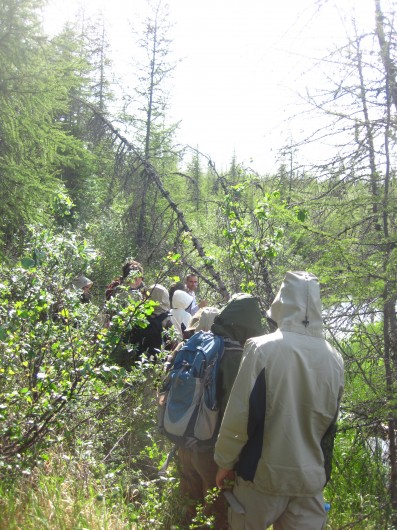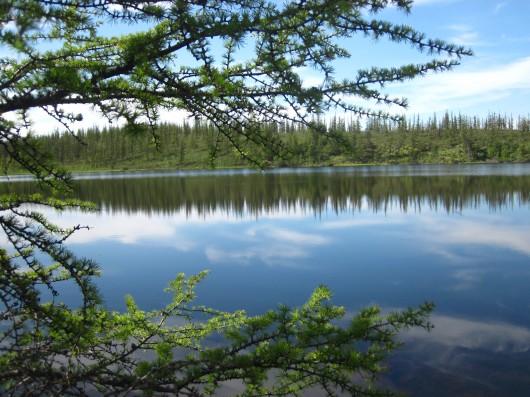Yesterday was our second full day of Arctic exploration. We made the trek to the watershed of interest for Polaris this year which includes characteristic hill slopes, a few lakes, and a deep flowing stream. There is a bit of a good natured competition between the terrestrial and aquatic-minded members of the team and as a more stream inclined person I was thrilled to find flowing water, however some of the terrestrial scientists (*cough* Andy and Sue *cough*) were making fun of us for our water trickle excitement.

Andy explaining what we know about the dynamics of Y4.
When we finally arrived at the flowing stream Andy sarcastically exclaimed, “Behold, the mighty Y4!” but honesty even a stream that small does some incredible things for the entire ecosystem. Streams act as ecosystem integrators and exporters. All characteristic streams in this area have hill slopes as banks and all the water and nutrients from the surrounding ecosystem collects in a deep channel running through the middle. All of these nutrients are then transported downstream, but in the transport nutrients are not merely moved along, they are changed by the microbial community and released in the form of fluxes. It is these fluxes of greenhouse gases that most interest me because they are well studied on land, but less is known about fluxes from streams. They are often disregarded as insignificant because of their size, but when scaled up they may have a significant impact on climate change and ecosystem carbon budgets.
I suppose I can get off my stream soap box now and report that we are very hot, but happy here on the barge. We are all making progress on project ideas and learning more about the resources we have here to do big science in a big place.

Shuch’ye Lake, an integral part of the Y4 watershed.



